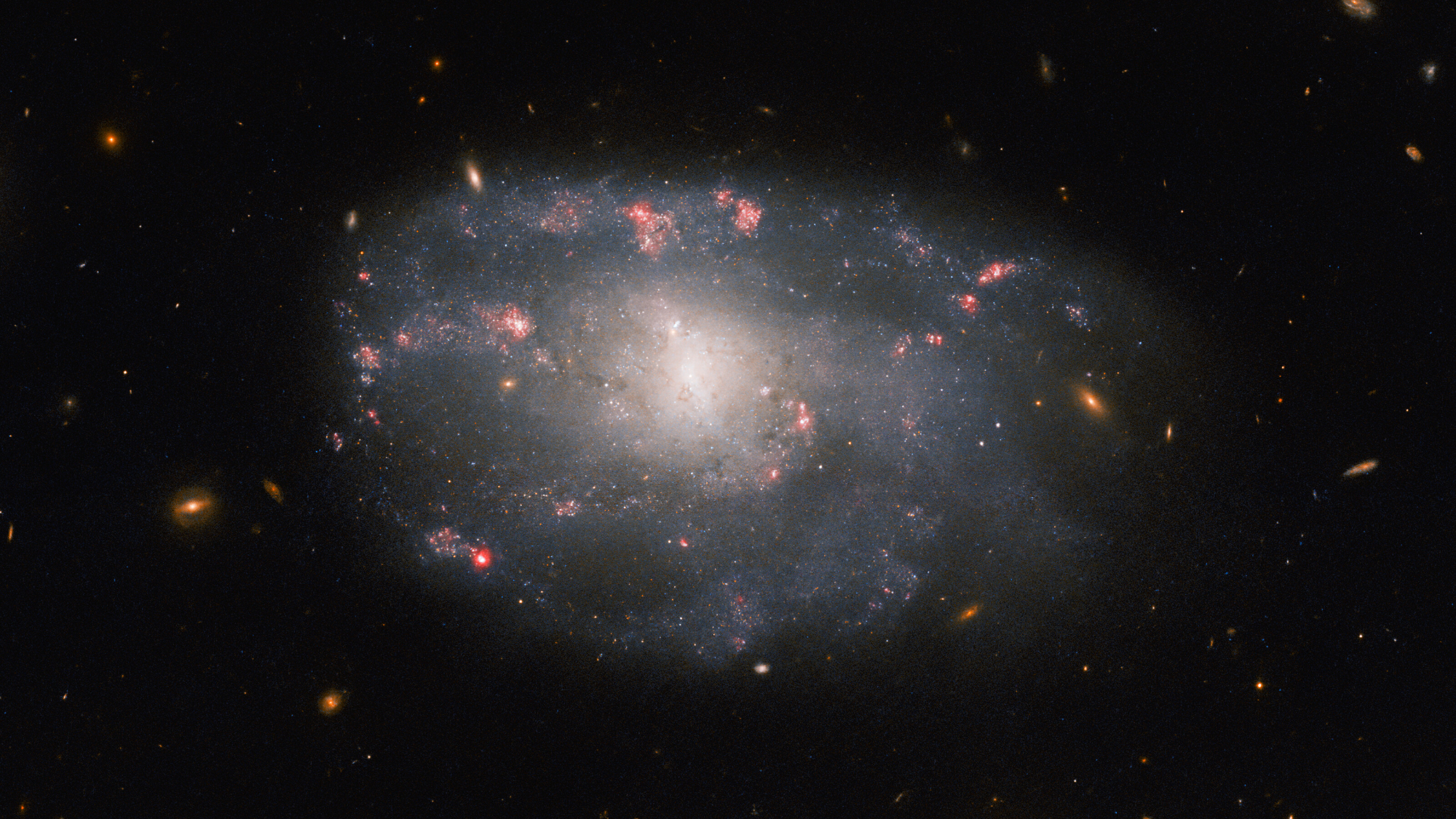Hubble Space Telescope spies 'irregular' spiral galaxy in Ursa Major (photo)
A new image from the Hubble Space Telescope captures the sinuous spiral arms of a distant galaxy budding with new stars.

A new image from the Hubble Space Telescope captures the sinuous spiral arms of a distant galaxy budding with new stars.
Known as NGC 5486, this irregular spiral galaxy lies 110 million light-years from Earth in the constellation Ursa Major. It is classified as an irregular galaxy because it doesn't have a defined shape or structure, likely distorted by the gravity of a larger neighbor.
The Hubble Space Telescope captured a new view of NGC 5486, which NASA shared on March 10, showing the galaxy’s indistinct, meandering spiral arms and bright core. Several dim, distant galaxies can also be seen in the background of the image.
Related: The best Hubble Space Telescope images of all time!
"The tenuous disk of the galaxy is threaded through with pink wisps of star formation, which stand out from the diffuse glow of the galaxy’s bright core,” NASA officials said in a statement from the agency.
NGC 5486 lies close to the much larger Pinwheel Galaxy, which is one of the best-known examples of a "grand design" spiral galaxy. The Pinwheel Galaxy, formally known as NGC 5457, lies about 21 million light years from Earth in the constellation Ursa Major, and is one of the closest galaxies to our planet. It is about twice the size of the Milky Way, with prominent and well-defined spiral arms, and estimated to be home to more than a trillion stars.
Hubble photographed the Pinwheel Galaxy in 2006, which, at the time, was the largest and most detailed photo of a spiral galaxy ever taken by the space telescope, according to the NASA statement.
Get the Space.com Newsletter
Breaking space news, the latest updates on rocket launches, skywatching events and more!
The recent photo of NGC 5486 was taken as part of an initiative to explore debris left behind by Type II supernovas, which are violent stellar explosions that occur following the rapid collapse of a massive star.
"As massive stars reach the end of their lives, they cast off huge amounts of gas and dust before ending their lives in titanic supernova explosions," NASA officials said in the statement. "NGC 5486 hosted a supernova in 2004, and astronomers used the keen vision of Hubble’s Advanced Camera for Surveys to explore the aftermath in the hopes of learning more about these explosive events."
Follow Samantha Mathewson @Sam_Ashley13. Follow us on Twitter @Spacedotcom and on Facebook.
Join our Space Forums to keep talking space on the latest missions, night sky and more! And if you have a news tip, correction or comment, let us know at: community@space.com.

Samantha Mathewson joined Space.com as an intern in the summer of 2016. She received a B.A. in Journalism and Environmental Science at the University of New Haven, in Connecticut. Previously, her work has been published in Nature World News. When not writing or reading about science, Samantha enjoys traveling to new places and taking photos! You can follow her on Twitter @Sam_Ashley13.









